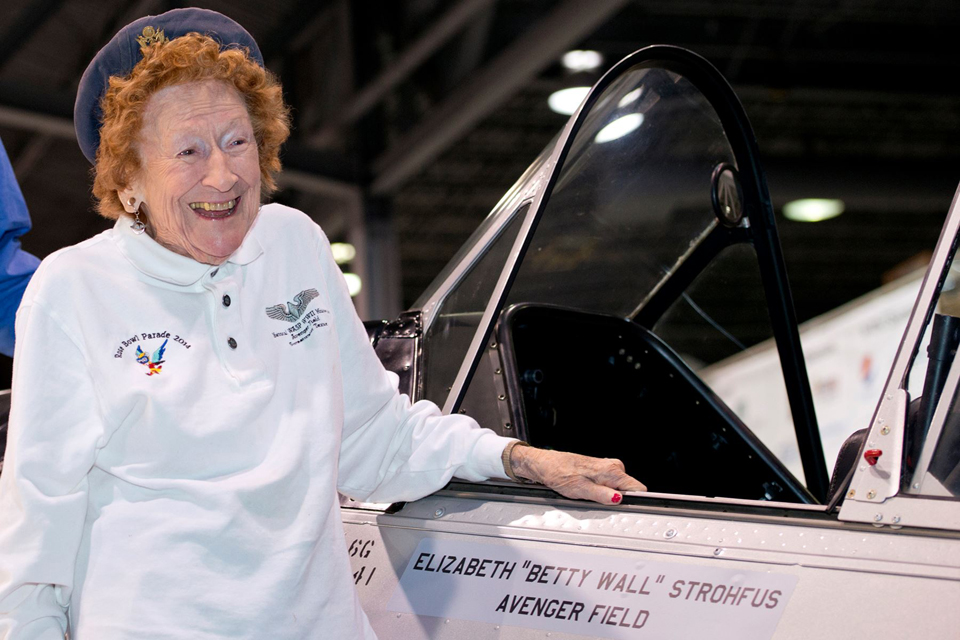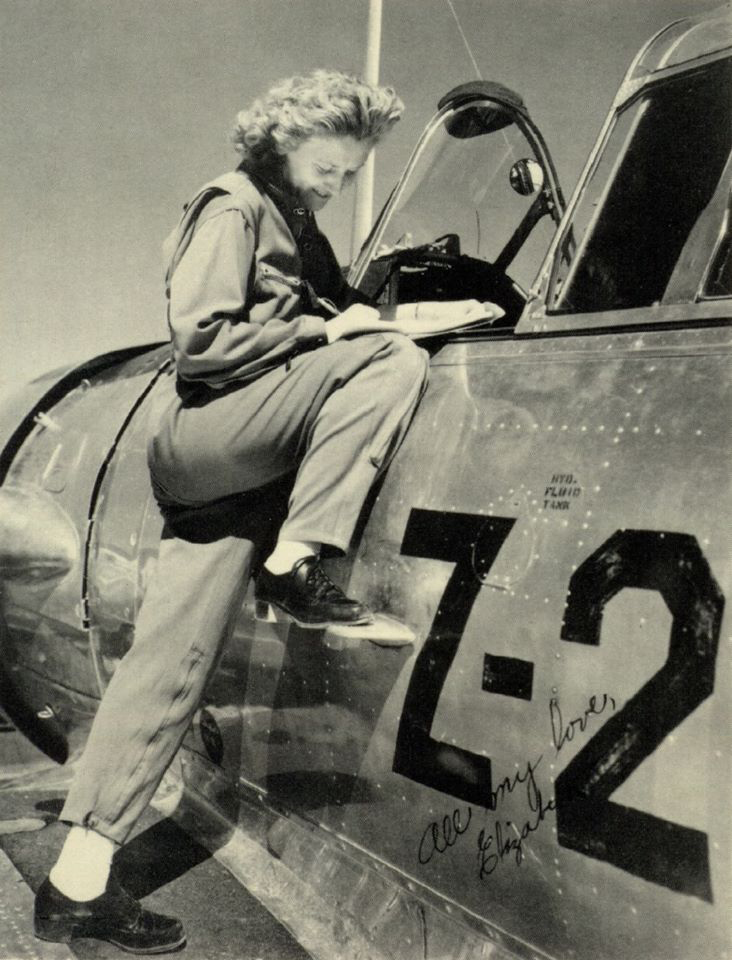Gone West: Liz "Betty" Strohfus
March 10, 2016 - During World War II, there were a group of women who broke down barriers for all future female aviators: these women were Women Airforce Service Pilots, or WASP. Formed by Jackie Cochran, they were responsible for delivery flights of new aircraft from factories to military bases, thereby freeing up male pilots for combat roles. They would eventually fly every type of aircraft in the U.S. inventory, and, along the way, wipe out the stereotype that women could not fly advanced, high-powered military fighters and bombers.
In March of 2014, we were privileged to host one of these amazing women, Elizabeth “Betty” Strohfus of WASP Class 44-W-1. We wanted to give her a special “only at EAA” moment, so we did a little asking and found out that, of all the types she’d flown in the war, the North American T-6 Texan had been one of her very favorites. Thanks a generous donor named David Lau, we have a beautiful example on display in our EAA AirVenture Museum, so a “cockpit climb” was definitely on the agenda.
In addition, Betty told us that she’d never had her name on an airplane. As she said, “We never had personal planes because we were always delivering them.” At that point, our mission was clear. Jeff Benedict, EAA’s Senior Visual Display Coordinator, created a decal to place on the aircraft with her name and that of the former WASP home base, Avenger Field.
On the day of her visit, we were greeted by a happy and powerful woman who was full of — and larger than — life. Even in her 90s, she was clearly the sort of person who was living every day to its fullest. We talked with her as we walked around the museum, explaining some of the collection, and Betty recognized many of the aircraft right away. We entered the Eagle Hangar, where we house our World War II and Korean-era aircraft, decked out with period posters and accompanied by the soft strains of the big bands of the 1940s. We showed Betty our Corsair, our P-38, our P-51 Mustangs, and then, at the end of the line, there was the T-6.
Her T-6.
This was the airplane she wanted to see more than anything, even more than the glamorous fighters of the day. We explained to her as we approached the aircraft that we knew she had never had her name on an airplane, and that we wanted to fix that. As she rounded the left side of the engine cowling, and looked up, she saw it: her name proudly displayed beneath the canopy. She just stood there for a moment to let it sink in. When she looked back at us, tears had formed in her eyes, and ours as well. She said, “I don’t even know what to say,” and that said it all.
Betty passed away on March 6, 2016, almost two years to the day after her visit with us, at age 96. Our little gesture was hardly the honor she deserved, but it was our humble way of saying thank you, and our privilege to have the chance.


